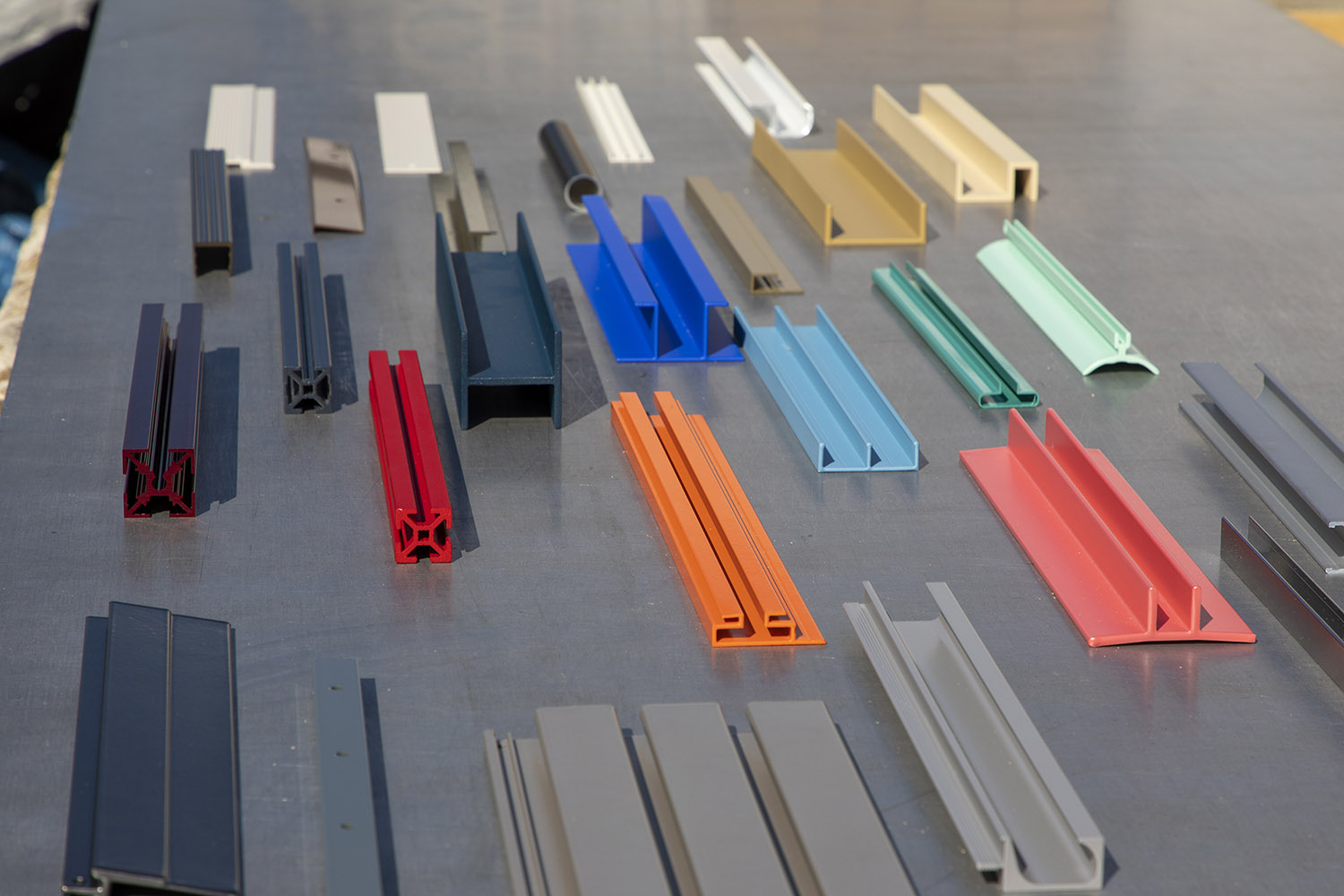Decoding Temper Designations for Aluminum Alloys

Tempering enables metalworkers to increase toughness and reduce hardness in metals—such as aluminum—through heat treatment. Hardened metals are generally more brittle.
Because processes are so specific, special temper designations for aluminum alloys are provided to indicate what work and treatments have been applied. Today, we’re breaking down these tempers and code meanings in this quick and informative guide.
Temper Designations for Aluminum Alloys
When looking for aluminum alloys and tempers, you’ll want to check the alphanumeric code. The specific aluminum alloy is noted with the first four-digit number. This number tells you what other elements (besides aluminum) the alloy comprises.
After a dash, the temper is provided by a letter and the following numbers. This designation indicates whether additional work, treatment, or altering of material properties has been performed.
For example, an alloy and temper code designation looks like “5005-H38”.
When you become familiar with the alloy and temper designations, you can easily find the aluminum you’re looking for to complete your next project.
Understand the Difference Between Aluminum 6061 and 6063
Alloy Designations
First, you need to choose which alloy best suits your project. Different alloys will have different responses to the work they undergo. To that end, the four-digit alloys designations represent:
- 1xxx series – “Pure” aluminum
- 2xxx series – Copper alloys
- 3xxx series – Manganese alloys
- 4xxx series – Silicon alloys
- 5xxx series – Magnesium alloys
- 6xxx series – Magnesium and silicon alloys
- 7xxx series – Zinc alloys
Temper Designations
Following the alloy designation, the temper is noted with one of five letters:
- F temper (fabricated) – Wrought or cast aluminum that has been shaped without regard to specific temperatures or strain hardening. “F” is generally used to describe aluminum that will be worked or shaped further before its final form.
- O temper (annealed) – Annealing is a specific heat-treating process that softens strain-hardened aluminum for further working or use in applications where over-hardening is a concern.
- H temper (strain-hardened) – Non-heat-treatable alloys that have been worked to strain harden the aluminum (i.e., the more the aluminum is worked, the greater its resistance to further working). Some H temper aluminum may be minimally heat-treated to prevent natural softening.
- W temper (solution heat treated) – Another “unfinished” temper, W describes alloys that have been subject to high temperatures (i.e., 800o-1000oF), causing the other metals to approach their melting point.
- T temper (thermally treated) – T describes any aluminum alloy that has been heat treated via solution, quenched, and then aged in open air or a furnace. Among heat-treated alloys, it’s the most common temper.
Thermally Treated Aluminum (T Temper)
As the most common heat-treated aluminum temper, “T” is granted additional characters in its temper designation to convey more information about the metal and its work history. “T” temper designations can contain up to five digits, beginning with a descriptor of the primary treatment applied.
After the first digit, more numbers may be used to designate whether stress relief procedures were used, how they were applied, and any additional treatments.
For example, “2024-T3511” indicates:
- 2024 – A magnesium and silicon alloy
- T3 – In descending order, the aluminum was:
- Solution heat treated
- Hot worked
- Quenched
- Cold worked
- Naturally aged in open air
- 51 – Stretched to relieve stress
- 1 – During or immediately following stretching, additional work (e.g., straightening) was performed
There are up to 10 subcategories for “T” temper aluminum.
T1 Aluminum
T1 refers to aluminum that was hot worked, immediately cooled, and naturally aged—but not cold worked.
T2 Aluminum
T2 describes aluminum that was hot worked, immediately cooled, cold worked for strain hardening, and then naturally aged.
T3 Aluminum
T3 alloys have been solution heat-treated, hot worked, quickly quenched, cold worked, and then naturally aged.
T4 Aluminum
T4 identifies alloys that have been solution heat-treated and then naturally aged—no cold working or other treatments.
T5 Aluminum
T5 alloys are those shaped at high temperatures, cooled, and then artificially aged at reasonably high temperatures for long durations (i.e., precipitation hardening).
T6 Aluminum
T6 alloys are similar to T4, except artificial aging follows solution heat treatment.
T7 Aluminum
T7 alloys resemble T6, but they’re artificially over-aged to increase corrosion resistance.
T8 Aluminum
T8 refers to aluminum alloys that have been solution heat-treated, cold worked to achieve strain hardening, and then artificially aged to also provide precipitation hardening.
T9 Aluminum
T9 alloys change the treatment and work order by completing a process of solution heat treatment and artificially aging with cold working for increased strength.
T10 Aluminum
T10 alloys are shaped at high temperatures, cooled, and artificially aged.
Strain Hardened Aluminum (H Temper)
In contrast to "T" tempers, "H" tempers designate the most common non-heat-treatable alloys. The two digits that always accompany "H" tempers indicate whether any thermal treatment was applied, followed by the degree of strain hardening achieved. Additional numbers refer to special treatments.
For example, “5052-H32” means:
- 5052 – An alloy of aluminum and magnesium
- H3 – Strain hardened and subject to elevated temperatures to prevent natural softening
- 2 – Strain hardened again to 25% (i.e., the amount of cold work that can still be performed)
“H” tempers are further divided into four different subcategories.
H1 Aluminum
H1 alloys have only been strain hardened—no thermal treatments have been applied.
H2 Aluminum
H2 alloys are over-strain hardened and then partially annealed at high temperatures to somewhat re-soften them.
H3 Aluminum
H3 alloys are strain hardened and then kept at reasonably high temperatures to prevent natural softening with age.
H4 Aluminum
H4 alloys are strain hardened and then coated with a paint or lacquer that applies mild heat as it dries.
Understanding the Second and Third Digits
If a second digit follows the first, this describes the aluminum alloy's remaining capacity to be further strain hardened. The number represents an approximate percentage between the “O” temper (i.e., re-softened aluminum via annealing) and the accepted strain hardening limit (i.e., “8”).
- 2 – 25% of the accepted limit
- 4 – 50% of the accepted limit
- 6 – 75% of the accepted limit
- 8 – “Maximum” strain hardening
- 9 – Exceeds accepted limits
A third digit represents some special variation to the normal process associated with the first two.
Need Help With Aluminum Temper Codes?
Aluminum temper codes are incredibly helpful but so detailed that they can quickly become confusing. If you need help decoding aluminum tempers, we’re here to help!
Here at Orange Aluminum, we’re a leading national supplier of aluminum extrusion products, offering over 1000 SKUs and custom dimensions. We know everything about aluminum, its alloys, and its tempers.
Contact us today to start sourcing the best aluminum materials for your next project!



